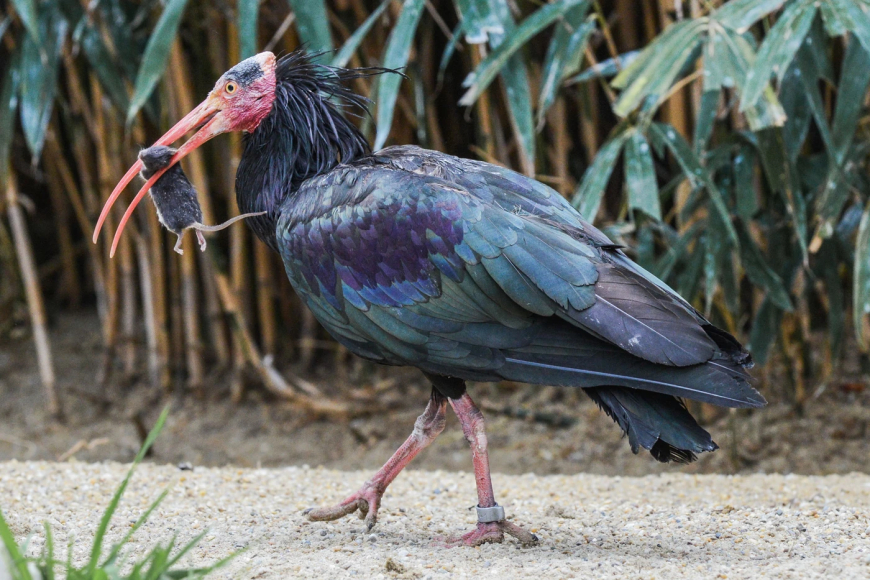Flight of Hope: The Return of the Northern Bald Ibis to Europe’s Skies
The northern bald ibis has returned to Europe centuries after extinction. Learn how conservationists are teaching birds to migrate and reviving ecosystems.

An Avian Comeback Like No Other
In an era often defined by ecological loss, a rare conservation triumph is quietly taking shape in Europe. The northern bald ibis (Geronticus eremita)—a bird once declared extinct in Europe for over 400 years—is making a dramatic return to the skies, thanks to decades of tireless scientific effort, international collaboration, and a bold experiment in migratory re-education.
Reintroduced populations of this glossy, featherless-headed bird are now nesting and thriving in parts of Austria, Germany, and Italy. But the most extraordinary part of this story? These birds are learning how to migrate again—not by instinct, but by following ultralight aircraft piloted by humans.
This is not just an animal reintroduction—it’s a powerful symbol of human-aided ecological rebirth, or what many are calling an “Ecological Renaissance.”
From Extinction to Reintroduction: A Four-Century Gap
Once sacred in ancient Egypt and commonly found across southern and central Europe, the northern bald ibis disappeared from the continent around the 17th century, largely due to habitat loss, hunting, and pesticide use. For centuries, it was considered lost to Europe’s ecosystems.
Surviving populations lingered in the Middle East and North Africa but faced severe decline. By the late 20th century, the species was listed as Critically Endangered by the IUCN.
The comeback began in the early 2000s when conservationists in Austria and Germany launched an ambitious rewilding initiative. The goal: reintroduce hand-raised bald ibises to the wild and teach them to migrate south for the winter.
The effort was spearheaded by the Waldrappteam, a dedicated group of biologists and volunteers. Through a mixture of imprinting techniques and human-guided migration, they successfully established a population capable of traveling from Germany and Austria to wintering grounds in southern Tuscany, Italy.
How Do You Teach a Bird to Migrate?
Because the reintroduced birds are captive-bred and do not inherit migratory knowledge from parents (a skill usually passed down generationally), the team had to simulate parental guidance.
Each year, conservationists raise chicks by hand while wearing ibis costumes, ensuring minimal human imprinting. Once the birds are strong enough, they are led by microlight aircraft on their southward journey—a process repeated for each new generation.
“This is not only a biological experiment but a cultural revival,” said Dr. Johannes Fritz, lead researcher of the Waldrappteam. “We are rewriting the natural memory of a species.”
So far, more than 300 birds have been successfully reintroduced, and at least three generations have now completed migratory routes unaided, a monumental leap in the program’s success.
Where the Ibis Now Flies Free
The core populations are now found in:
-
Austria (Salzburg and Upper Austria)
-
Southern Germany (Bavaria)
-
Northern Italy (South Tyrol and Tuscany)
In spring, the ibises breed in nesting colonies supported by volunteers and wildlife agencies. In late summer, they begin their 800–1000 km journey to Orbetello Lagoon in Tuscany, a protected wetland that serves as their winter refuge.
The European LIFE+ project and BirdLife International have provided technical and financial backing, ensuring the effort aligns with broader biodiversity goals under the EU Birds Directive.
Challenges: Power Lines, Predators, and Climate Uncertainty
Despite heartening successes, threats persist. In Austria and Germany, electrocution from power lines remains a leading cause of death among juveniles. Conservationists are now working with energy companies to insulate high-risk lines.
Other challenges include:
-
Illegal hunting in Italy, especially during migration season
-
Loss of feeding grounds due to urbanization
-
Climate change, which may disrupt migratory cues and food availability
Even with these hurdles, annual survival rates have climbed steadily, with over 70% of juveniles now surviving their first full migration cycle.
A Global Symbol of Conservation Innovation
The story of the northern bald ibis is being hailed by scientists and conservationists worldwide as a blueprint for high-tech, hands-on species revival. Unlike passive “hands-off” models of rewilding, this initiative requires active learning, behavioral imprinting, and transnational cooperation.
Notably, the project has inspired similar efforts elsewhere:
-
Egypt is exploring reintroduction near historical nesting sites along the Nile
-
Spain has launched pilot programs in Andalusia
-
Morocco, home to the world’s only truly wild bald ibis population, is collaborating with European researchers to ensure genetic diversity
The IUCN has since downlisted the species from “Critically Endangered” to “Endangered,” thanks in part to Europe’s success.
Why This Matters: Beyond One Bird
While some may view the ibis’s return as a niche win, it is actually a powerful case study in biodiversity repair. In a world facing accelerated species extinction, the revival of the northern bald ibis proves that human intervention, when guided by science and empathy, can restore lost ecosystems.
It also reflects a shift in conservation philosophy—from protecting what’s left to actively bringing back what’s been lost.
“We need to rethink extinction as a final word,” said ornithologist Dr. Simone Ravelli. “Sometimes, with the right tools and enough courage, we can write a new chapter.”














